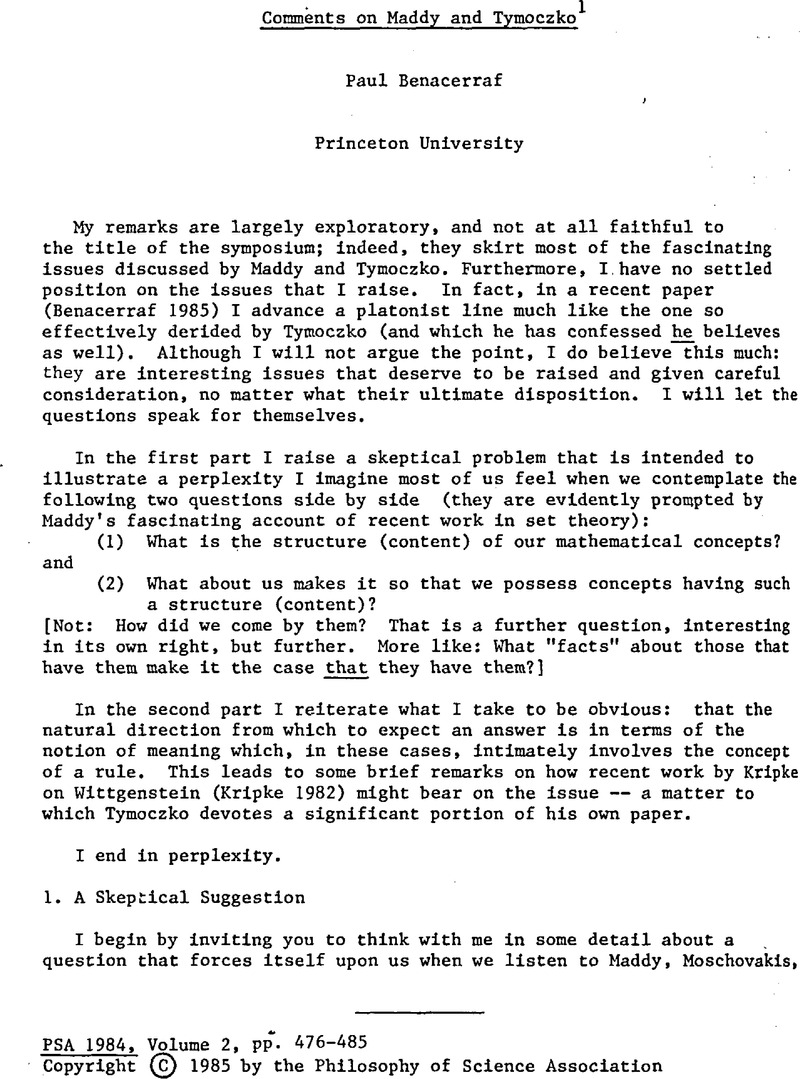No CrossRef data available.
Published online by Cambridge University Press: 28 February 2022

Comments on (Maddy 1985) and (Tymoczko 1985), constituting, along with comments by George Boolos, a Symposium entitled “New Directions in the Philosophy of Mathematics”, Philosophy of Science Association Meetings, Chicago, October 1984. I am grateful to Paul Boghossian for a number of discussions of Kripke's Wittgenstein. He is blameless for the remarks I make here.